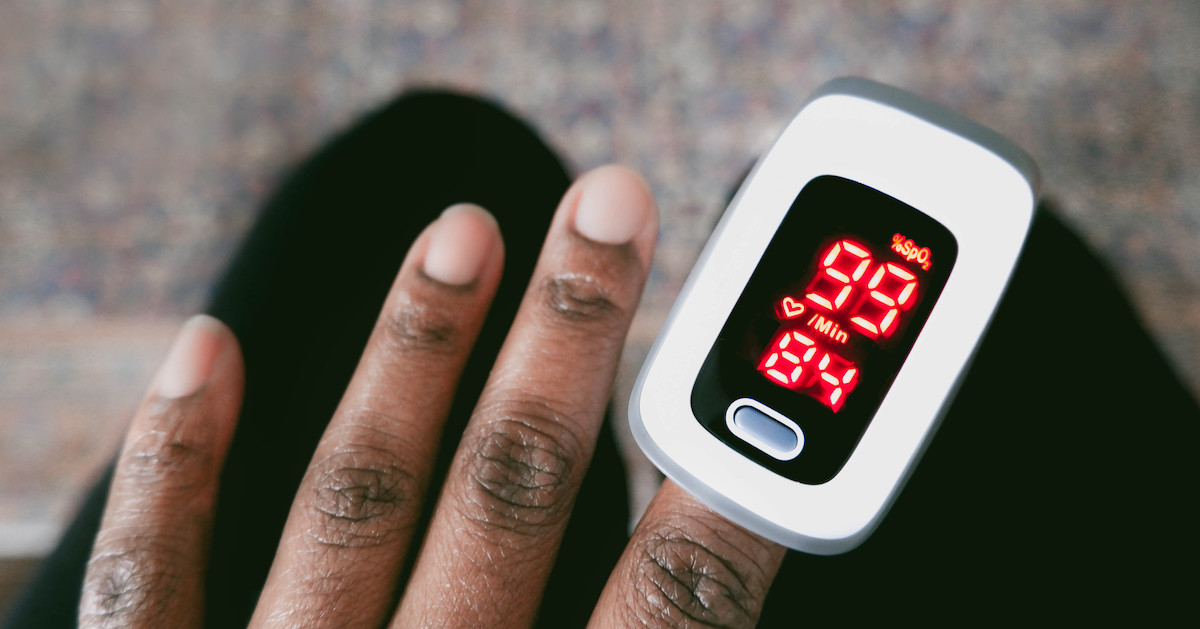
Amid a national reckoning with racism spurred by the COVID-19 death rate among Black Americans, the U.S. Food and Drug Administration’s standards for pulse oximeters – those all-too-common devices that use light to measure oxygen saturation in the blood – “essentially ignored how skin tone can affect a pulse ox reading,” according to the Johns Hopkins School of Medicine in Health Policy and Management at the Bloomberg School.
While charging the medical community with ignoring scientific literature while companies rushed products to market, academic health policy critics argue that eliminating pulse oximetry bias requires decisive regulatory action.
WHY IT MATTERS
Since pulse oximeters use light to take their measure of patients, the result for Black Americans is an example of how racial bias creeps into medicine, according to Hopkins’ health policy experts.
Cleared by the U.S. Food and Drug Administration in the 1980s under the 510(k) review process, there are now hundreds of pulse oximeter clearances based on old designs, with little regard for health equity or racial bias, according to the story published Monday.
While 2013 guidance recommended pulse ox manufacturers include at least two “darkly pigmented subjects” in their premarket studies, research published in the New England Journal of Medicine in late 2020 found that Black patients were three times as likely to have a significant discrepancy between pulse oximeter and arterial blood gas readings.
Citing the study, the State of Black America said Black Americans were more than twice as likely to die of COVID-19 as whites.
Much of the cause can be traced to medical device manufacturers that have used light-skinned individuals as a default baseline for assessing pulse ox performance, according to Dr. Theodore Jack Iwashyna, a Johns Hopkins ICU physician and Bloomberg Distinguished Professor at the Johns Hopkins School of Medicine in Health Policy and Management at the Bloomberg School.
“The reality is, function in white patients was considered the norm, and function in Black patients was considered a clinical nuance that anesthesiology and pulmonology experts were supposed to know about,” he said in the story.
Because the technology is ubiquitous – even penetrating remote patient monitoring through smartphones nearly 10 years ago – it’s seen as a striking example of how systemic racism can drive healthcare and population health outcomes, according to a lawsuit brought by the Roots Community Health Center in Oakland, California, to halt the sale of flawed pulse oximeters.
THE LARGER TREND
A November 1, 2022, public meeting to address concerns related to pulse oximeters’ race and color bias began the process of redressing the harms, adverse health events and death medical devices can cause people of color. One year later, several state attorneys general wrote to FDA Commissioner Dr. Robert Califf to urge action.
“It is imperative that the FDA act now to prevent additional severe illness and mortalities among darker-skinned people resulting from inaccurate or misleading pulse oximeter readings as well as inadequate diagnostic and treatment protocols and procedures, they said in the letter.
The attorneys general said they were also concerned about the risk of pulse oximeters’ incorporation into other diagnostic tools or medical technologies, because their readings are used to diagnose many conditions and diseases.
Mass-scale digitization of their data could result in healthcare predictions based on past pulse oximetry data with embedded color bias that could “end up reproducing health disparities based on race.”
To reduce the disparate performance of pulse oximeters, the agency is considering updates to its 2013 recommendations for premarket clinical study of these devices.
FDA advisers from the Anesthesiology and Respiratory Therapy Devices Panel of the Medical Devices Advisory Committee have proposed new guidance for pulse ox clinical testing. Public comment feedback on the agency’s approach to improving pulse ox device performance was due in January.
In the executive summary – prepared for a February meeting at FDA’s Center for Devices and Radiological Health – the panel noted that, while “reports were from critically ill patients and a causal association between the use of the pulse oximeter and the death cannot be established,” most adverse events were classified as malfunctions – 91.5% – with 40% of the death reports mentioning issues with a pulse ox alarm system failing or having the volume set too low.
We reached out to CDRH for an update and an estimated timeframe for the next regulatory steps and on Friday, an FDA spokesperson responded that a revision to its guidance is listed on the CDRH Guidance Agenda as a priority with the intent to publish in FY 2024, which ends September 30, according to the U.S. Treasury.
“The FDA has been engaging stakeholders, gathering input from ongoing clinical research to help inform our decisions and evaluating all available information pertaining to factors that may affect pulse oximeter accuracy and performance,” the spokesperson added.
“The FDA will keep the public informed as significant new information or recommendations become available.”
ON THE RECORD
“We are moving into an environment where our approaches to clinical care have to be race-conscious,” Joseph Wright, American Academy of Pediatrics’ health equity officer, said in the Hopkins’ story.
“In other words, very cognizant of the fact that bias could be part of the root cause of particular decisions around care delivery, or in this case, particular decisions around the use or the approval of a certain technology.”
This story was updated on July 12, 2024, with FDA’s response and an estimated timeframe for a guidance update.
Andrea Fox is senior editor of Healthcare IT News.
Email: afox@himss.org
Healthcare IT News is a HIMSS Media publication.
